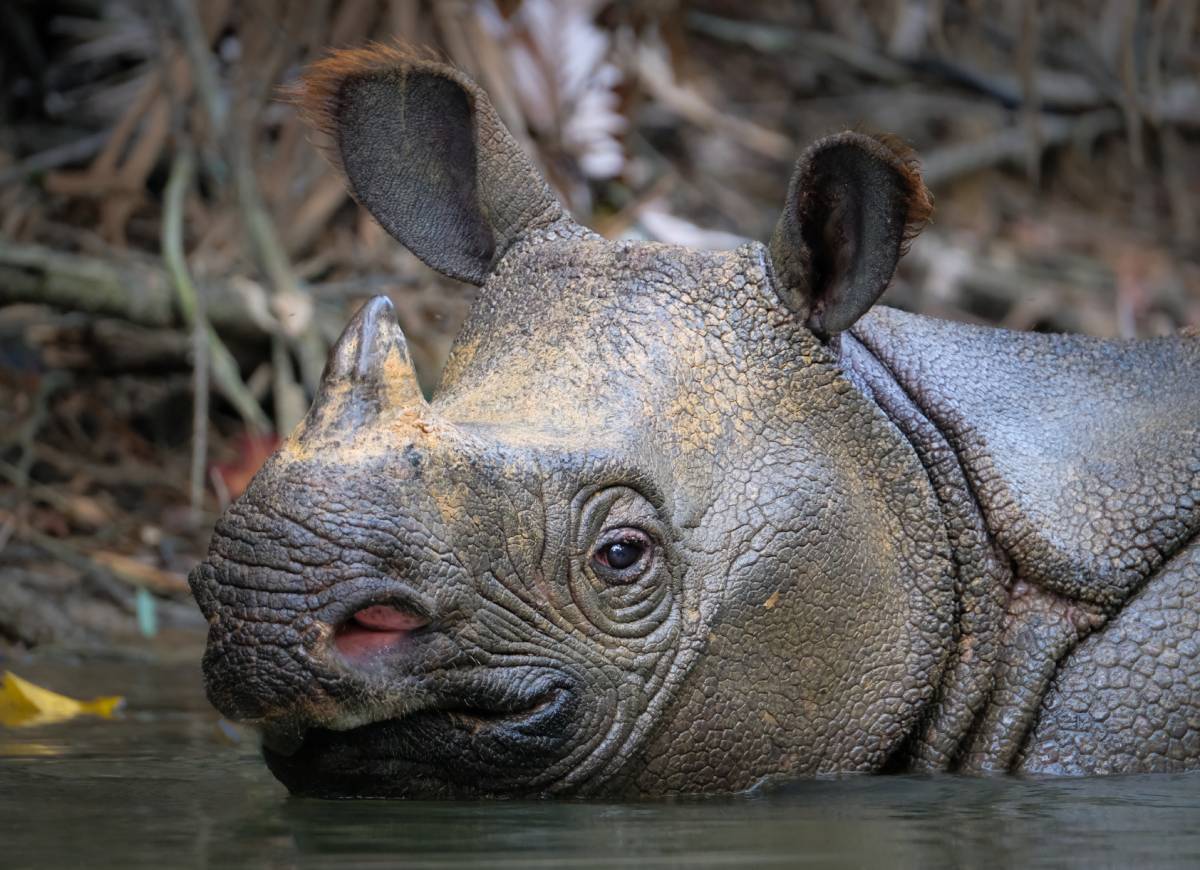Javan rhinoceros: Rare and vital rainforest grazers
- Nature Conservation
- Land Conservation
- Iconic Species
- Wildlife
- Mammals
- Southeast Asian Forests
- Indomalaya Realm
One Earth's “Species of the Week” series highlights the iconic species of each of the Earth’s 185 unique bioregions.
With a small, black horn at the tip of their snout, leathery skin folds giving them an armored appearance, and weighing over two tons, the Javan rhinoceros is a mesmerizing sight in the dense jungle of Ujung Kulon National Park. Once, this majestic species roamed the islands of Java and Sumatra, extended throughout Southeast Asia, and ventured into India and China. Now, they are only found in the Banten Province of Indonesia.
The Javan rhinoceros is the rarest of the five rhino species, with only 75 individuals currently living. Like all rhinoceroses, Javan rhinos are vital grazers. They consume large amounts of vegetation, ensuring the forest remains healthy, fostering more biodiversity, and aiding in carbon sequestration.

The Javan rhinoceros is the iconic species of the Javan-Bali Tropical Rainforests bioregion (IM17), as defined by the Bioregions 2023 Framework.
Physical Characteristics
The Javan rhinoceros is the second smallest species of rhino. They can reach a height of 1.7 m (5.6 ft) and weigh up to 2,300 kg (5,070 lb). Among the Rhinocerotidae family, they possess the smallest horns, measuring less than 20 cm (7.9 in) in length. Similar to the Indian rhino, the Javan rhinoceros has a single horn, unlike the other three species, which have two. In this species, only the males develop horns, making the female Javan rhinoceroses the only existing rhinos that remain hornless into adulthood. They don't use their horns for combat. Instead, they utilize them to scrape mud, pull down plants for consumption, and clear paths through dense vegetation.

Diet and impact on the environment
Leaves, shoots, twigs, and fallen fruit constitute most of the Javan rhinoceros' diet. They are the most adaptable feeders among all rhinos, with biologists documenting over 300 different species they consume. Eating approximately 50 kg (110 lb) of food daily, they play a crucial role in making room for new plant growth.
Their behavior also benefits the ecosystem. They knock down and trample vegetation with their hefty bodies and revel in mud baths. This not only helps regulate the Javan rhino's body temperature and stave off diseases, but their movements also offer a natural pruning system. This assists the forest in maintaining its health, storing CO2, and producing clean air.
Conservation
For millions of years, Javan rhinos have been pivotal to their ecosystem. However, human-induced habitat destruction and rampant poaching have drastically reduced their numbers. Their horns are highly valued in traditional Chinese medicine, even though research has shown they have no medicinal properties. The International Rhino Foundation, in conjunction with the staff of Ujung Kulon National Park, is committed to safeguarding the remaining members of this critically endangered species. Success is gradual; Javan rhinos are primarily solitary creatures, and females only reproduce every 2-3 years. However, a recent birth has increased their population to 75 individuals.
Explore Earth's Bioregions

